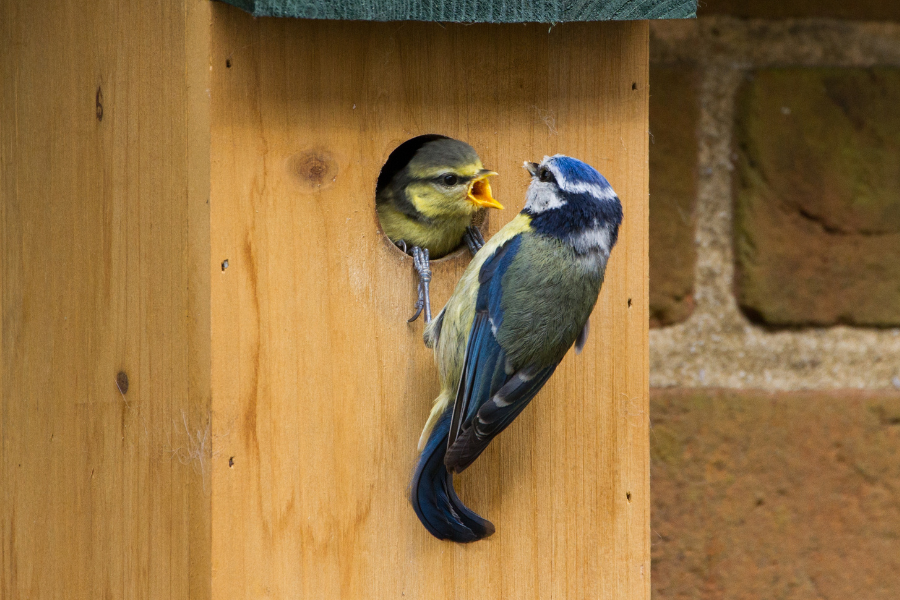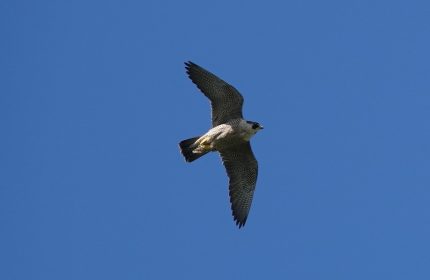5 ways to help garden birds this nesting season
As the nesting season gets underway, our wild birds gear up for the hustle and bustle of building nests, finding a regular supply of food and water and, most importantly, bringing the next generation of birds into the world.
Now is the perfect time to get your nest boxes up, and not only will it heighten the birding activity in your garden, but it will also give you front-row seats in watching the fascinating lifecycle of birds!
Here are some top tips on how to help birds and entice them to nest in your garden this spring.
Use the right nest box
Starting with the most important tool to get birds nesting in your garden- you guessed it- the nest box! But with nest boxes coming in all shapes and sizes and different types of entrance holes, it can be tricky to choose the right one. The first thing to know about picking the right nest box is that garden birds have their own preferences for entrance holes. So if you would like to entice a particular species to nest in your garden, here is a size guide of entrance holes they prefer.
- 26-28mm size holes will attract Blue Tits, Coal Tits, Marsh tits & Willow Tits.
- 32mm-34mm and oval size holes will attract House Sparrows, Tree Sparrows, Pied Flycatchers, Nuthatches & all Tits.
- Open-fronted nest boxes will attract Robins, Wrens, Black Redstarts, Spotted Flycatchers, Blackbirds & Pied Wagtails.
Find the best place to site your nest box
Most garden birds like their nest boxes sited 2-4 meters above the ground. But if you’re siting a nest box for robins, place it between 1-2 meters high. Face the box between North and East to avoid direct hits from harsh wind, rain and heat from the sun. When securing the nest box against a solid surface (tree or wall), let it sit tilted forward slightly so rain won’t get in through the entrance hole.
 Keep your bird feeders and water bath full
Keep your bird feeders and water bath full
Now that you have an idea of what nest box to get up and where to site it, you’ll want to get the garden birds to notice it. Setting up bird feeders and a bird bath near the box is a great way to motivate them to settle in. Premium Sunflower Hearts and high-energy Suet Treats are huge crowd-pleasers amongst wild birds. After some time, you may start seeing the same bird flying back and forth in the nest box; this quite possibly means it has taken up residency! Once this happens, move the feeders away from the box, as activity at the feeder could disturb nesting birds.
£10 Discount when you spend £50 or more at Ivel Valley Wild Bird Food
Ivel Valley Wild Bird Food are delighted to offer Silversurfers members a £10.00 discount when you spend over £50 on full price products (excludes Dried Mealworms and Live worms).
 Provide garden birds with the right nesting material
Provide garden birds with the right nesting material
You can make nesting season a little easier for your birds this spring, by placing nesting material outside in the garden, but please do not use pet fur, human hair, or yarn scraps. Many people believe these are suitable materials, but human hair and yarn scraps pose a choking threat, and pet fur may contain flea or tick treatment that may harm wild birds. If you would like to help birds build their nests, you can place nesting wool in the garden, a sustainable material that is safe for birds to use.
Protect your nesting birds
Predators such as squirrels and woodpeckers may try to access nest boxes to eat the eggs. They do this by eating/pecking away at the wooden entrance hole until it’s large enough to get inside. Keep your garden birds’ eggs safe this nesting season, and fix protection plates to your nest box entrance hole. These strong copper plates will withstand any attack from predators and prevent them from breaking in. Some nest boxes already have protection plates installed.


ADVERTORIAL




















